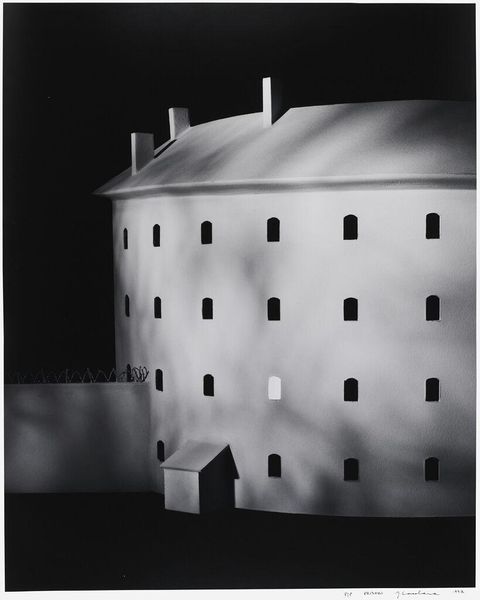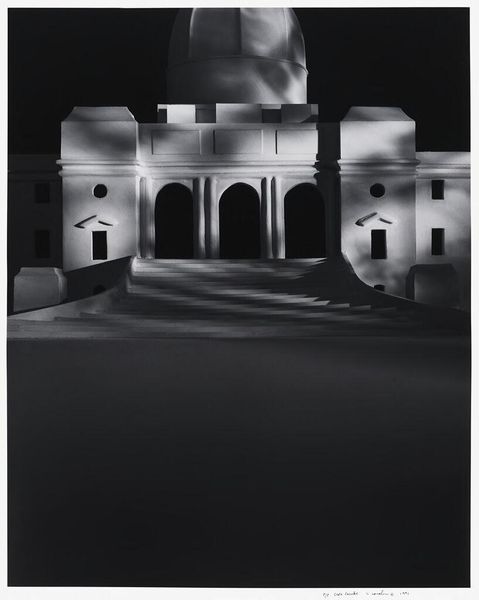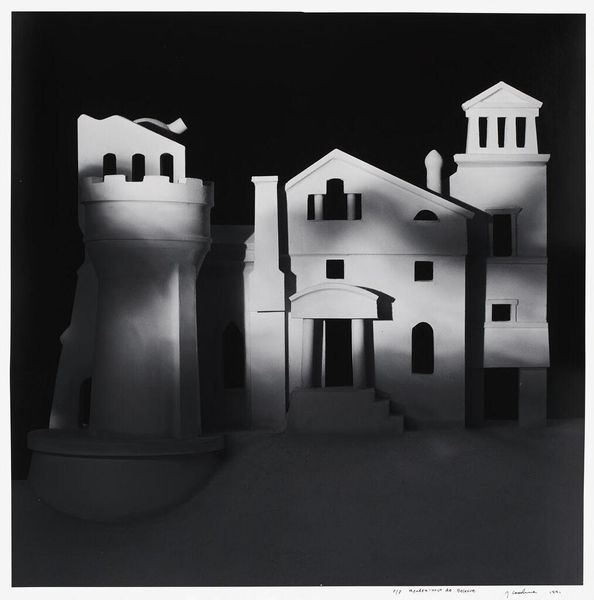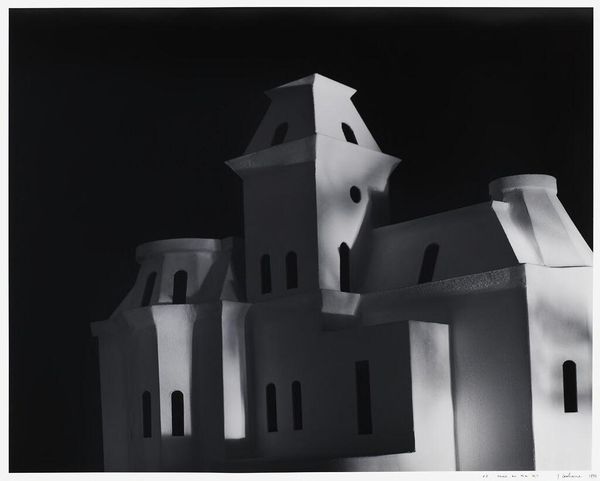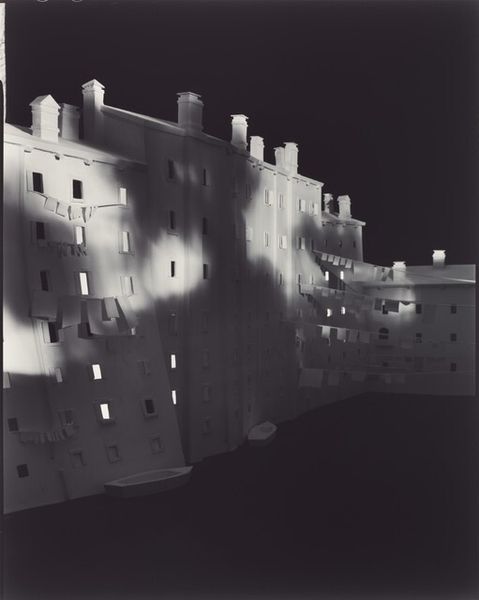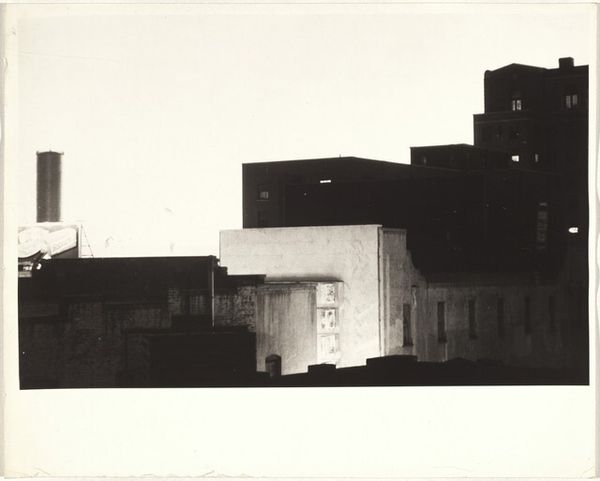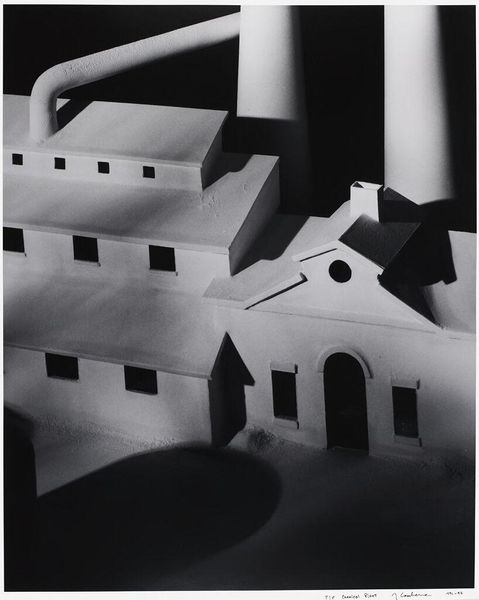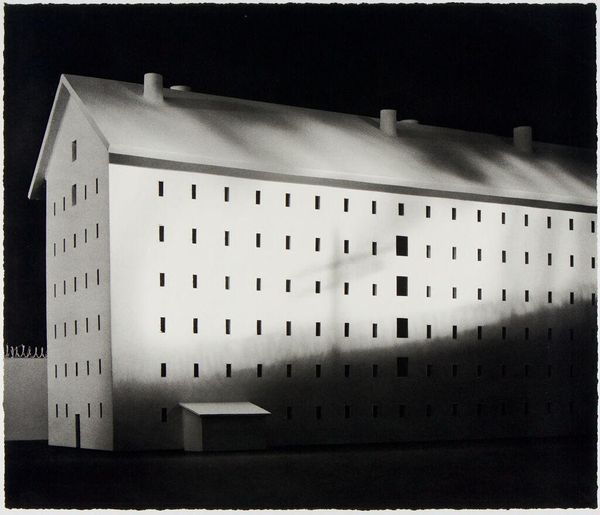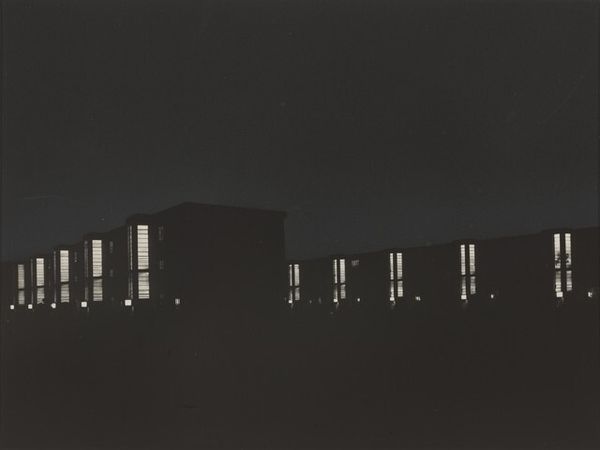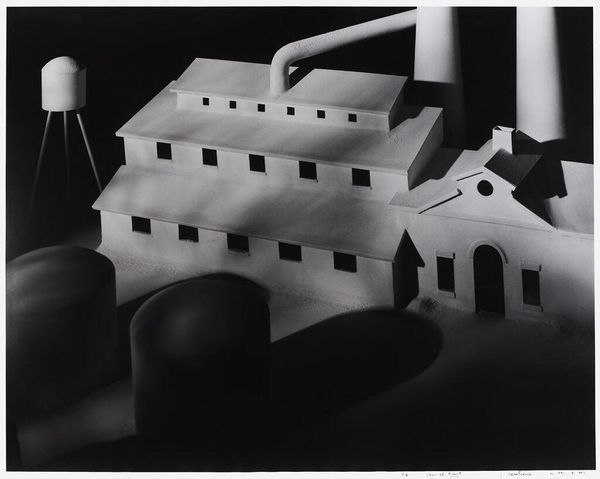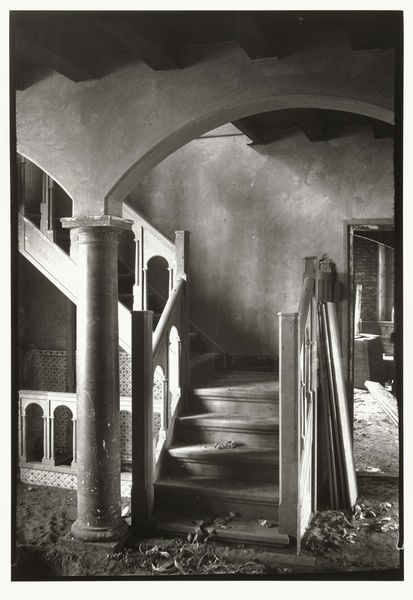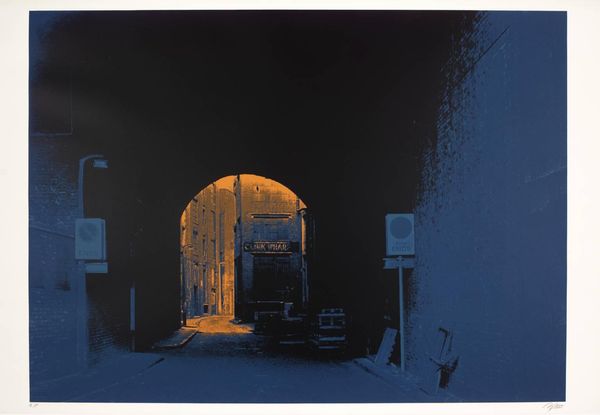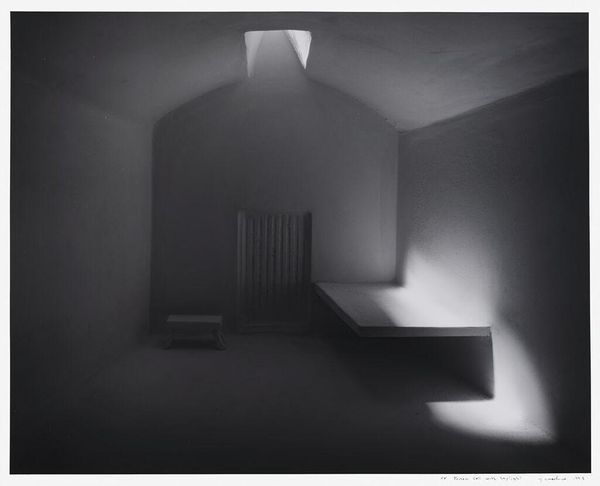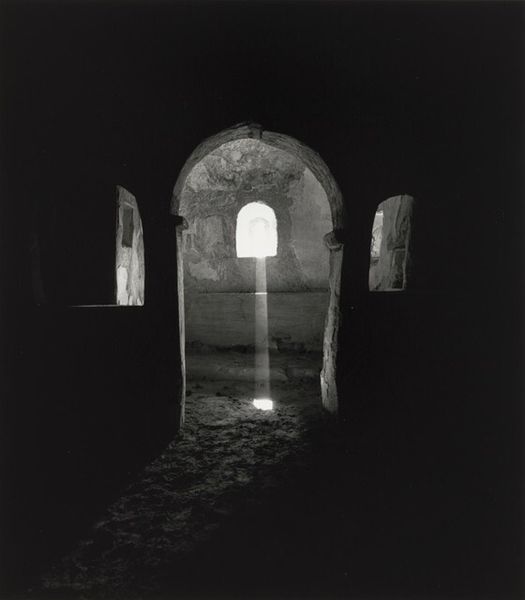
Dimensions: image: 91.12 x 74.93 cm (35 7/8 x 29 1/2 in.) framed: 95.41 x 79.06 x 2.54 cm (37 9/16 x 31 1/8 x 1 in.)
Copyright: National Gallery of Art: CC0 1.0
Curator: This photograph from 1993 is titled *Prison at Cherry Hill* by James Casebere. Editor: It strikes me immediately as haunting. The monochrome palette, stark geometry, and that central tower all lend an air of sterile surveillance. I wonder, what prison is it referencing? Curator: Interestingly, it's not a direct representation of the actual Eastern State Penitentiary, also known as Cherry Hill, in Philadelphia, but a constructed model that Casebere then photographs. The power here lies in suggestion, a simulacrum rather than a replica. We confront the *idea* of the prison, its underlying, eternal forms. Editor: So, he builds his own prison… I am wondering about the material. This immaculate white finish feels crucial. Is it plaster, foam? There's a handmade quality despite the crisp lines that humanizes it. Curator: Material and method absolutely impact meaning. It recalls architectural models, proposals for buildings. He uses very low tech things: simple modeling materials to conjure powerful historical symbols. This space reflects Jeremy Bentham's Panopticon which in turn suggests a world structured by constant, unseen power and spiritual hierarchies. The building becomes an abstract figure that stands for repression, fear, and control. Editor: You are right: it's chilling when you realize it looks more like a child's game of blocks, until the heavy symbolism snaps you out of it. Is Casebere making a commentary on architectural intentions, their naivety versus the concrete effects? Curator: Exactly, and the black void surrounding this perfectly geometric prison could echo societal blindness towards the dehumanizing nature of institutions. It reminds me of how memory and architectural form are interwoven, each reinforcing the other across generations. It is less about representing one real jail, and all about tapping into our archetypal associations of places like it. Editor: The photograph has certainly peeled back layers of interpretation for me. From its initial deceptive simplicity to its deeper echoes of structure and control, the method and meaning are deeply interconnected. Curator: Absolutely, I agree completely. The visual codes embedded in this image remind us of how images and architecture act on the collective psyche.
Comments
No comments
Be the first to comment and join the conversation on the ultimate creative platform.
